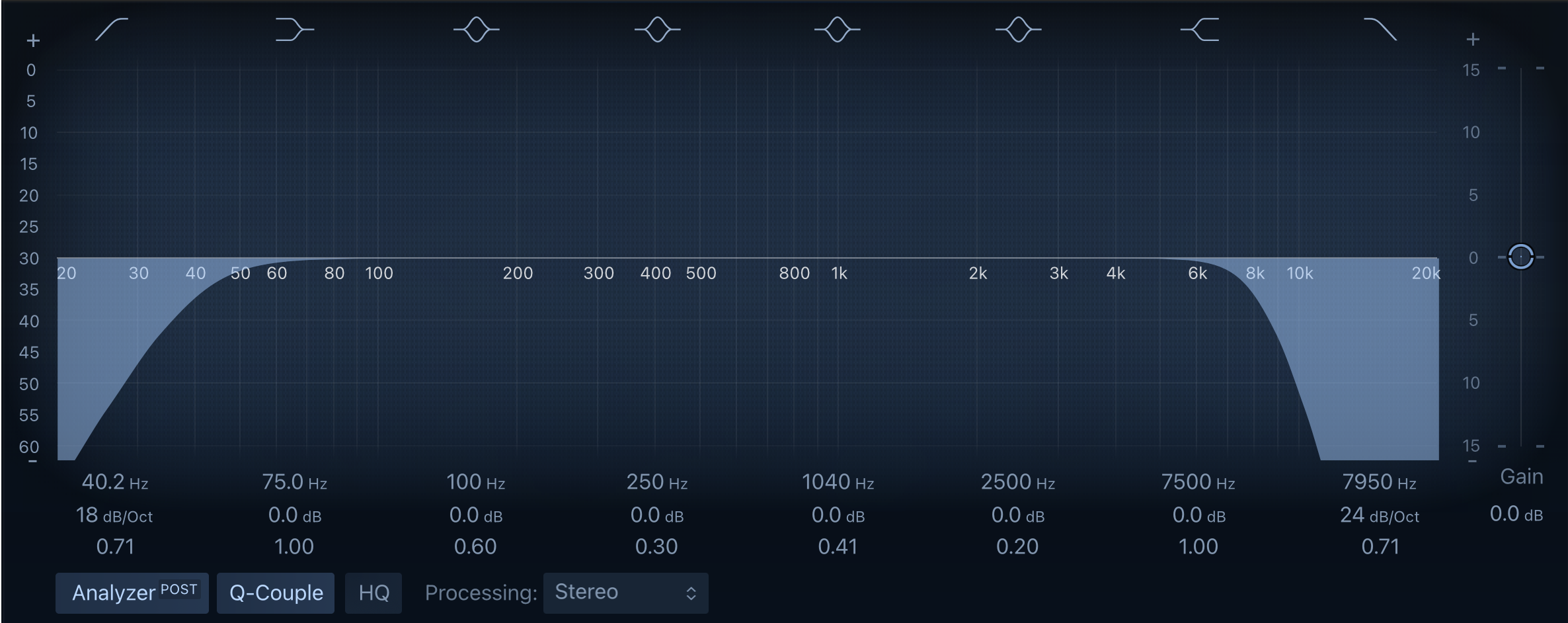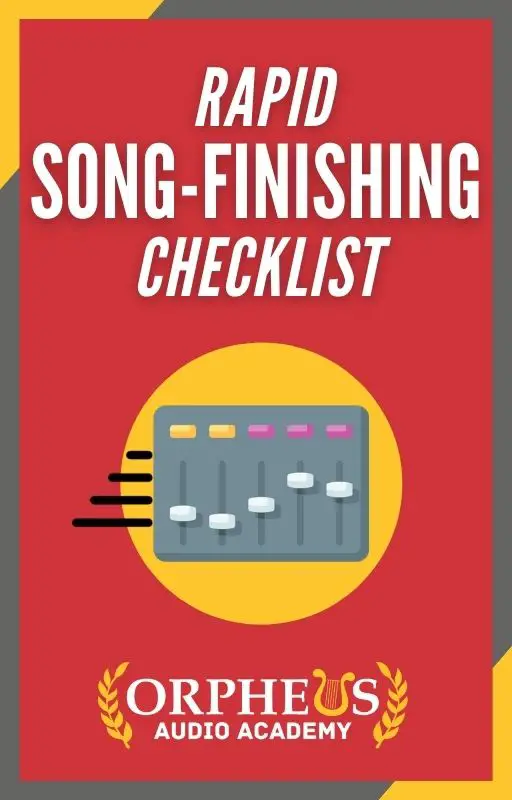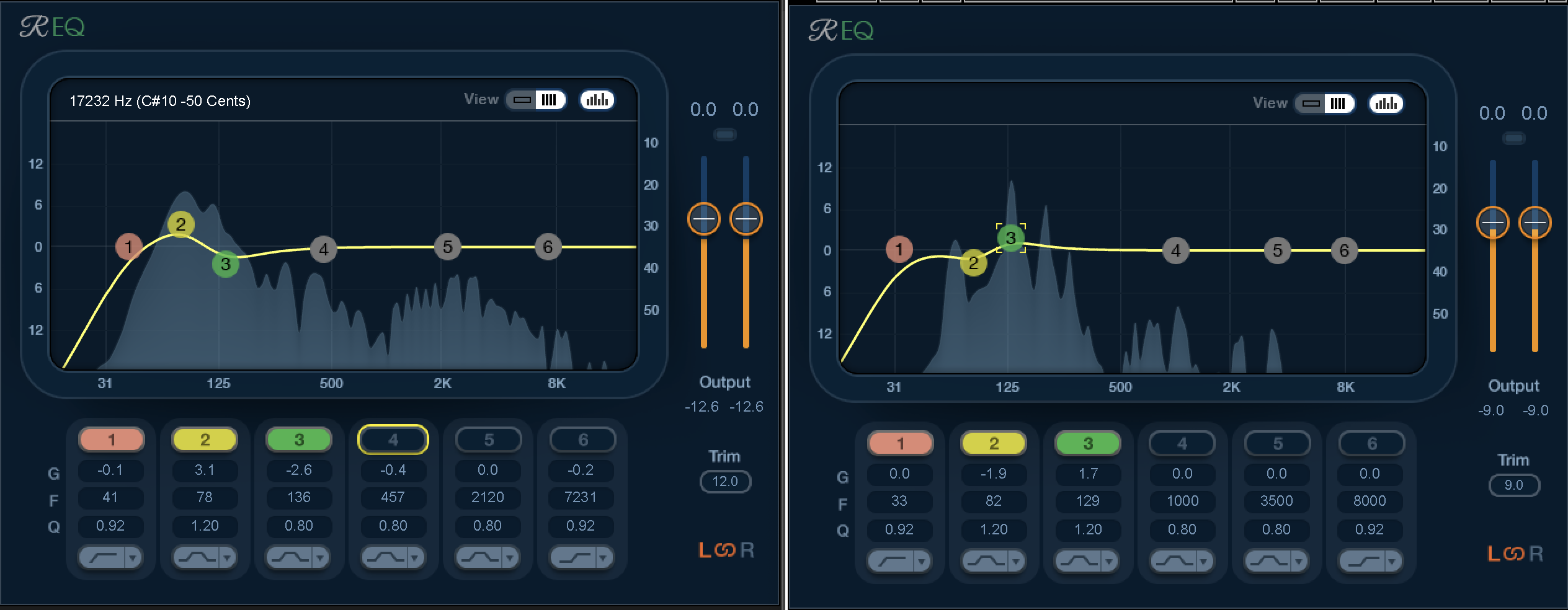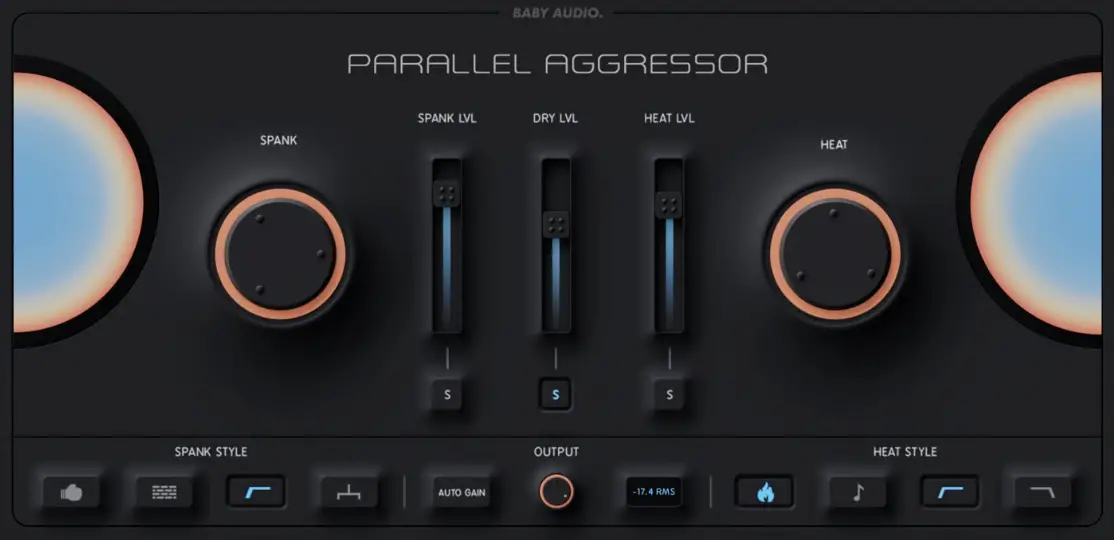There's nothing like the low end thump of a bass guitar to add power and groove to a mix.
But getting that perfect bass tone can be tricky.
In this article, we'll discuss how to EQ bass for a perfect mix.
EQ Your Bass by adding a high and low pass filter, without changing the tone. From there, cut out any annoying frequencies and shape the tone of your bass to your liking. Finally, use "pocket EQ" to invert your bass and kick drum frequencies so both can be heard in the mix.
With that said, let's dive into how to actually achieve these EQ moves..
High & Low Pass Filter

This might sound odd at first, but it's a good idea to add a low pass filter AND a high pass filter to your bass.
You may think that a high pass filter will cut out too much of the bass, but you'll find all that you'll really do is remove some of the super-low rumble and room noise that isn't needed, and just taking up energy in your mix.
Low cut at around 30 to 40 Hz, and you shouldn't really notice the tone of the bass changing at all, but you'll end up with a cleaner, tighter, more distinct bass-sound.
Take the same approach with the top end of your basss
Cut the top end until you start to loose the sound of the bass, and then back off until the tone is basically the same.
When you bypass the EQ, you shouldn't notice much of a difference between before and after, yet making these EQ moves will make a big difference in the end, especially after compression and limiting.

Create Better Songs, Faster
Click below to download my free song-finishing checklist to help you create radio-ready songs without taking months to complete them.
Cut Any Annoying Frequencies or Resonances

Next, shape the tone of your bass by cutting any annoying frequencies or resonances.
Bass should have a tight low end, with a smooth midrange.
To achieve this, start with the bass boosted at around 80 Hz.
From there, you can experiment with different frequencies to find the perfect sound for your bass.
Create a narrow spike with your EQ, and hunt through the frequency spectrum to see if you find any frequencies that really stand out as annoying.
From there, apply cut to that range as needed.
Invert Bass With The Kick

When mixing bass with other instruments, it's important to create space in the mix so that the bass can be heard clearly.
The instrument your bass is most likely to come into conflict with is your kick drum, as a bass can really bury the kick.
To avoid this, you can invert the bass with the kick through a technique known as "pocket EQ".
Bass-kick inversion is a great way to create space in the mix and make sure that the bass and kick are working together, rather than against each other.
To do this, start by finding the fundamental frequency of the bass with an EQ. Once you've found the frequency, use an EQ to cut out that same frequency from the kick track.
Likewise, boost the kick fundamental while cutting that same frequency on the bass.
This will help your kick and bass to each sit in their own little "pocket" in the frequency spectrum of your song.
Unrelated to EQ, if you find your kick and bass are still clashing, you can use sidechain compression to turn down the volume of your bass each time the kick hits.
You can see my article here on how to set this up.
Parallel Saturation In Upper Mids

Also not really EQ related, but you can add some grit and bite to the bass without making it too brittle or plucky by adding some parallel saturation to the upper mids.
- Start by adding a multiband compressor to an aux track, and then buss the bass to that aux.
- Set the multiband compressor to solo the high mids
- Then, add a saturation plugin to that same buss and severely boost the wetness on the plugin, and blend in a small portion of this saturation in with your bass
Alternatively, you could use a plugin like Parallel Aggressor by Baby Audio, which allows you to apply saturation just to the mids of your instrument by using the high and low pass filters under the "Heat Style" setting.
This is an amazing plugin that is super easy to use, and allows you to control the amount, style, and frequency range of the parallel compression and saturation that you'd like to add to a track.
You can get 10% off Parallel Aggressor (and all Baby Audio Plugins) when you use my code "OAA" at check out.
Finish More Radio-Worthy Songs, Faster!
Getting a great-sounding bass is just one piece of the puzzle when it comes to producing pro-quality songs.
If you want a proven step-by-step formula for mixing radio-worthy tracks from start-to-finish...
Create Pro-Mixes, Faster
Click below to download my free song-finishing checklist to help you create radio-ready songs without taking months to complete them.
This checklist will walk you through a proven step-by-step mixing and mastering process so that you don't ever have to guess or wonder what to do next.
You'll know exactly what to do, and when, so you can quickly mix, master, and finish more tracks.
Next Steps
Your kick and bass need to work together, not against each other, in your mix.
Let me know in the comments below…

